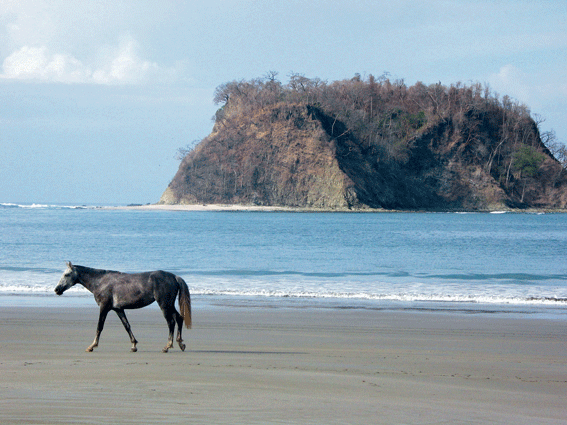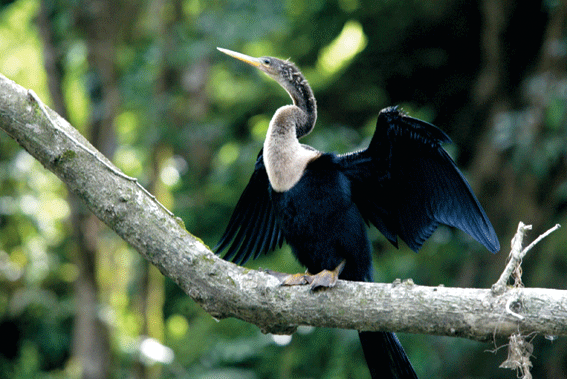
![]() Travel
Travel
Costa Rica
The First Carbon-Neutral Country
Costa Rica has pledged to become Carbon-Neutral by reducing or offsetting its emissions of greenhouse gases that cause global warming.
By: Stefan Lovgren *
SAN JOSE, Costa Rica – A small but growing number of countries are racing to become “carbon neutral” by reducing or offsetting their emissions of greenhouse gases that cause global warming.

Roberto Dobles, the minister of environment and energy for Costa Rica, calls the race the “Carbon-Neutral World Cup.” His country recently became the first to make the green pledge.
“We realize that climate change is probably the major challenge facing humanity today, and it’s everyone’s responsibility to combat it,” Dobles says in an interview at his office in San Jose.
The quest for carbon neutrality seeks to balance the amount of carbon dioxide a country releases by burning fossil fuels with the amount that it captures or offsets by, for example, planting trees.
At a U.N. climate conference last month, the United Nations’ Environment Program launched a new online network of countries engaged in the carbon-neutral endeavor.
At the 154-nation talks, Monaco, the host country, became the fifth to commit to carbon neutrality, joining Norway, New Zealand, Iceland and Costa Rica.
The smart money may be on Costa Rica to get there first, experts say, even though the small Central American country faces a host of problems, from illegal logging to overdevelopment fueled by tourism.
“There are advantages that Costa Rica offers to becoming carbon neutral,” says Manuel Ramirez, Costa Rica director for the environmental nonprofit Conservation International.
For example, over 80 percent of Costa Rica’s energy is already generated through renewable sources, such as water and wind.
And the country’s rich tropical biosphere makes the environmental stakes especially high there.
Slightly smaller than West Virginia, Costa Rica is believed to house about 5 percent of the world’s plant and animal species.
“Because Costa Rica is so biologically intense, we recognize that we have a special responsibility,” says Dobles, the environment minister.
Dobles predicts that greener business practices will ultimately lead to a greener bottom line, especially in the tourism industry.
“We have an opportunity to become the first carbon-neutral tourist destination,” he says. “We want Costa Rica to be a guilt-free location to visit, and that will be good for business.”
Some tourist areas of Costa Rica, particularly the northwest Guanacaste region, have suffered from overdevelopment in recent years. Many of the sleepy fishing villages that once dotted the country’s Pacific coast have turned into sprawling beach resorts catering to thousands of mostly American tourists. There are now three dozen nonstop flights from the United States to Guanacaste’s provincial capital, Liberia.
sprawling beach resorts catering to thousands of mostly American tourists. There are now three dozen nonstop flights from the United States to Guanacaste’s provincial capital, Liberia.
Now the region is advertising itself as the next eco-friendly luxury hot spot, and several dozen high-end hotel chains are planning green resorts along the coast.
Ronald Sanabria, director of the Rainforest Alliance’s sustainable tourism program in Costa Rica, says the country’s carbon-neutral pledge is “courageous and forward-thinking. We have high hopes for this commitment.”
But some observers worry that development is moving too fast for the region’s infrastructure to handle and that regulations are not always followed.
“The current government knows mistakes were made in Guanacaste,” says Jonathan Tourtellot, director of the National Geographic Society’s Center for Sustainable Destinations. (National Geographic News is part of the National Geographic Society.)
Many tourism companies have now begun measuring their carbon output and offsetting them through reforestation projects.
In addition to tourist development, deforestation has also taken a toll throughout the mountainous country, but the government has cracked down hard on illegal logging in recent years.
“Deforestation has halted mostly, or it is very low,” says Ramirez, of Conservation International. “The population has a stronger environmental awareness level than before.”
As part of its quest for carbon neutrality, Costa Rica’s government compensates landowners for planting and protecting trees on their property, since the trees help capture carbon, protect watersheds and preserve scenic beauty.
The decade-old program is funded through a 3.5 percent tax on gasoline and pays about $15 million a year to around 8,000 property owners.
More than 6 million new trees were planted last year, surpassing a government target by more than a million trees, according to officials.
This year Costa Rica plans to plant 7 million more, “almost two new trees for every person in the country,” says Dobles, the environment minister.
The Costa Rican government also recently signed an agreement with the United States that results in one of the largest “debt-for-nature” swaps in history. According to the agreement, the United States will forgive $26 million of Costa Rica’s debt, freeing up that money for Costa Rica to invest in tropical forest conservation programs over the next 16 years.
Some critics have dismissed carbon neutrality pledges such as Costa Rica’s as publicity stunts, arguing that the only way to achieve climate neutrality is to eliminate greenhouse-gas emissions completely.
The Costa Rican government has also come under strong criticism recently for its plans to begin exploring for oil in its territorial waters.
This is an apparent reversal of a 2002 declaration by then-President Abel Pacheco that Costa Rica would become an environmental leader and not a “petroleum or mining enclave.”
“There’s a lack of strong political will to stop oil exploration in the country,” says Ramirez, of Conservation International. “Current governmental officials are under extreme pressure to explore oil-dependent mechanisms. The general population could go back to the old days where oil-dependent energy was not seen as a problem.”
For his part, Dobles says that increasing demand for energy means Costa Rica needs oil in the short term before more environmentally friendly fuels become readily available.
Unless it discovers oil at home, Dobles says, Costa Rica will be forced to import heavy crude from Venezuela that is expensive to refine and generates more pollution than lighter grades of oil.
“If we had hydrogen as a source today, we’d go for hydrogen,” he says. “But we don’t.”
* Stefan Lovgren is a regular contributor to National Geographic News.